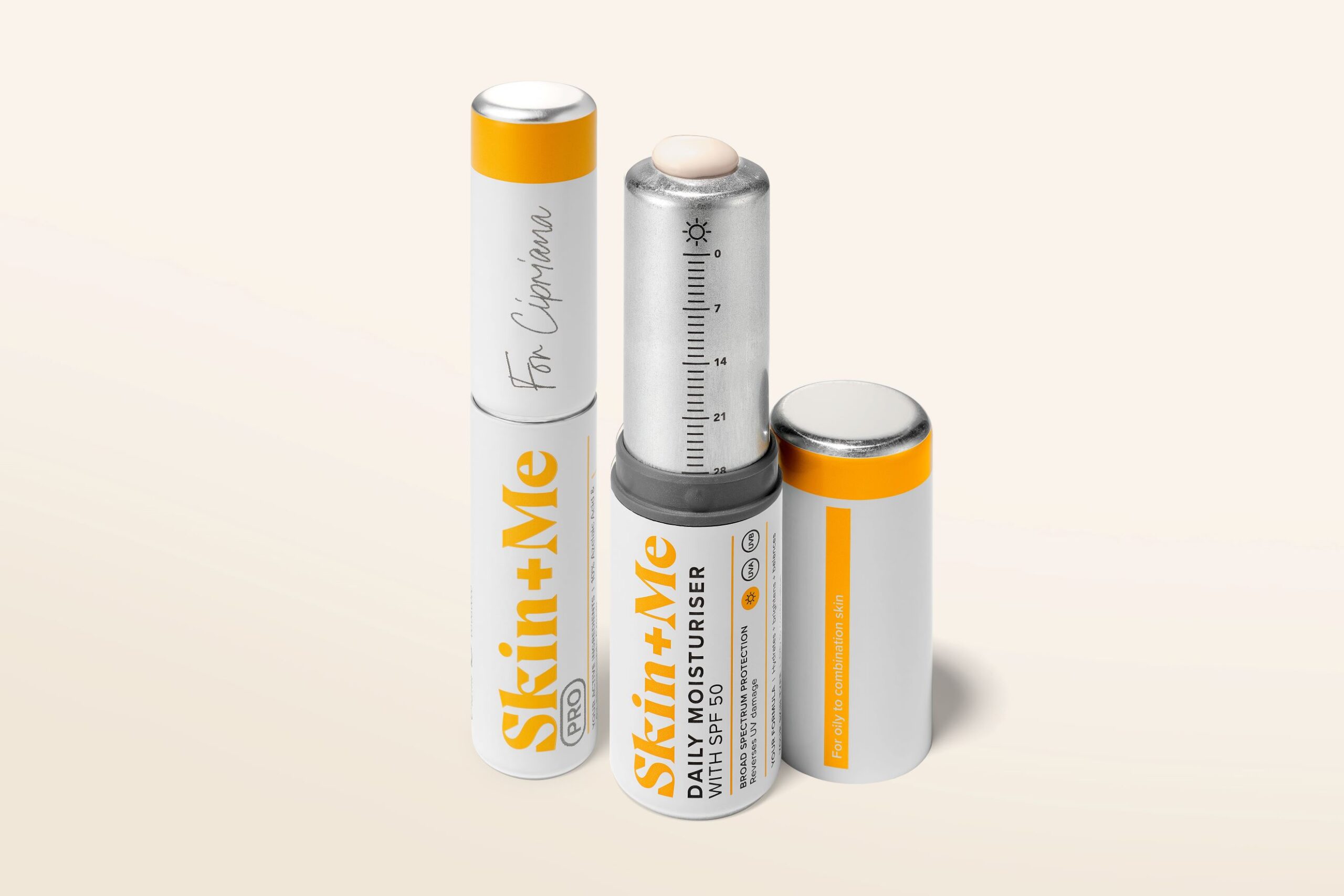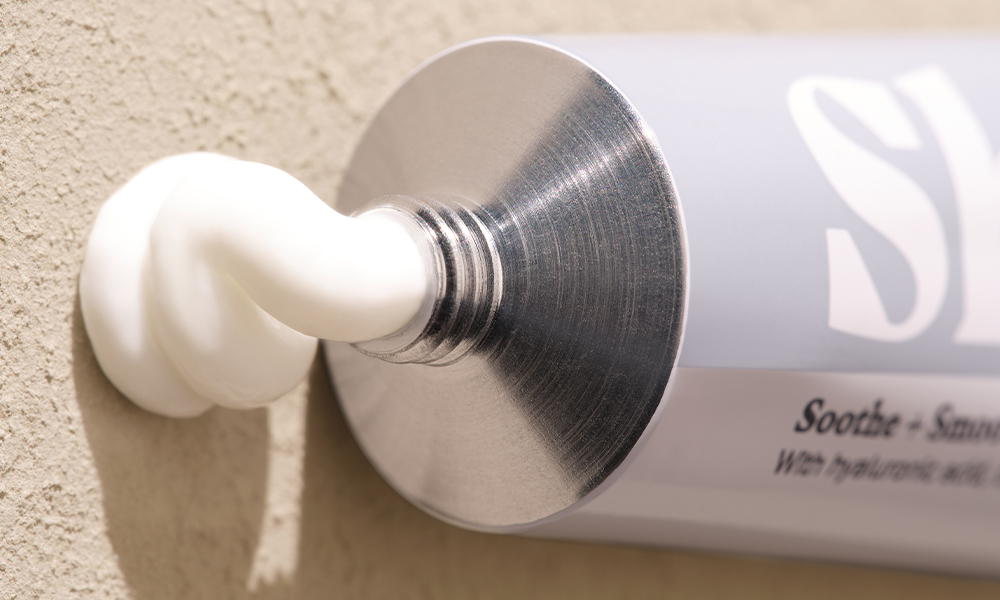Meet the Daily Moisturiser that guarantees SPF 50 – with every click

Link to share article here:
Ask A Dermatologist: What Is Microdosing?
Microdosing – taking minute amounts of a substance for benefits while minimising side effects, is a growing area of interest. We explore the term and ask Dr Jason Thomson, a dermatologist from Skin + Me HQ more about the phenomenon and what it can do for you.
So what is microdosing?
Microdosing refers to the practice of taking tiny amounts of powerful active ingredients. This minimises any negative side effects with the aim of still providing benefits.
The practice has been around for decades and was first used by the pharmaceutical industry. Today, you might hear the term microdosing in reference to micro quantities of psychedelic drugs – one theory is that this can boost creativity and focus for users.
Microdosing topically with skincare ingredients is our focus here.
Is the move away from ‘more is more’ skincare into ‘slow beauty’ and ‘skin minimalism’ another term for microdosing?
“Slow beauty and skin minimalism are slightly different from microdosing. The two concepts revolve more around approaching your whole skincare routine with simplicity and consistency whereas microdosing really refers to an approach with single, powerful ingredients – such as retinoids, vitamin C and hydroxy acids.
“These ingredients can be associated with side effects such as dryness, redness and peeling and so microdosing really means using these ingredients at lower concentrations than the higher, evidence-based strengths. This is what dermatologists have, in reality, been doing for years. More recently, with the availability of compounding pharmacies (such as used by Skin + Me) we now have the ability to formulate with lower strengths that can be used every day with minimal side effects but still provide visible benefits.”
Are there any ingredients that don’t require microdosing?
“Generally it’s the ingredients that cause side effects that can be microdosed. These include retinoids (like tretinoin), vitamin C, hydroxy acids (such as glycolic and lactic acid). Everything else generally doesn’t need to be given at lower strengths.
“Sunscreen should never be microdosed although most people are unintentionally using less sunscreen than they should to get the SPF advertised on the bottle. I recommend putting the product across two fingers before applying to work out how much you need to cover your face and neck.”
Why should we consider using lower concentrations more regularly?
“By using lower concentrations, more regularly you can gradually build up your skin’s tolerance to the powerful active ingredients. This minimises the chance of side effects, such as dryness and sensitivity, whilst still getting the benefits.”
Have you seen many clients suffering from hypersensitive skin due to the use of too many ingredients?
“Yes. Skin sensitivity is a complex problem involving multiple factors but over the past 18 months with people spending more time at home and even post-lockdown, many have started over-complicated skincare routines and layering up multiple products with strong active ingredients.
“This can lead to dryness, irritation and an impaired skin barrier which, in turn, leads to skin sensitivity. Stress has also been implicated in skin sensitivity and the pandemic has undoubtedly led to increased stress levels for us all and may also be contributing to what we’re seeing in clinics.”
Is there also any benefit in using one ingredient at a time? Or is it still ok to use a few? Are there any we shouldn’t mix?
“It depends on what you’re trying to achieve. If you want to treat fine lines and prevent photo-ageing, in addition to the essential sunscreen, you’re probably going to want a retinoid in the evening and vitamin C in the morning. You can get products with these single active ingredients but often when combined with other ingredients, the effects can be better.
“For example, ferulic acid is also an antioxidant, like vitamin C, but when formulated together this helps to stabilise vitamin C so it lasts longer and can be more effective in protecting the skin from free radicals and improving hyperpigmentation. Niacinamide is an ingredient often formulated with retinoids and helps you tolerate the treatment better and maintain the skin barrier. Using multiple single-ingredient products and layering them up is unnecessary because you can often get all the ingredients you need in a single product.
“You run the risk of irritating your skin and skin sensitivity if you get this wrong and knowing how these different ingredients and different formulations interact and affect each other is almost impossible unless you’re a formulation scientist!
“I normally advise against combining active ingredients that can be irritating such as retinoids, vitamin C and acids as you’re going to increase your chances of developing side effects. I advise using the minimum number of active ingredients that give you benefit so you don’t risk irritation and sensitivity. The way to incorporate powerful active ingredients into your routine is to go slowly and gradually build up tolerance. Always listen to your skin and stop if you start developing any signs of irritation or sensitivity.
“For example, start your retinoid in the evening and once you’re tolerating this well, you can then introduce vitamin C in the morning a few times a week and gradually build up frequency as tolerated – or microdose and go for a lower strength at first until you’re tolerating it. Everyone’s skin is different and some people will find they’ll be able to tolerate higher strengths from the beginning and add in multiple active ingredients but I always advise exercising caution and sticking to the essentials to help you get the most from your skincare routine.”
How long does it take to see/experience benefits when microdosing?
“It’s difficult to quantify this currently as studies comparing the lower microdosing concentrations with higher concentrations are lacking. Based on pharmacology principles, there’s likely to be a minimum strength below which any skincare ingredient will be ineffective, which is why it’s best to gradually increase the strength with evidence for their effectiveness when you can tolerate them.”
Is it better, then, to microdose retinoid instead of using higher strengths less frequently?
“We don’t know the definitive answer to this as there’s been no scientific studies directly comparing the two methods and they’re both essentially ways of microdosing. It really comes down to preference. Applying a retinoid twice a week can be hard to remember when to actually apply your treatment so a benefit of lower strengths each day is that it’s easier to get into a regular routine.
“The key is building up tolerance so that you can continue with regular, consistent use. If you’re starting and stopping on a strength you can’t tolerate and that’s leading to periods of irritation and sensitivity, you’re not going to be able to continue treatment and perhaps even end up in a worse place than when you started.”
Does this method suit all skin types? Or is it best for more sensitive or reactive skins?
“Yes. Building up tolerance is suited to all skin types as any skin type can be prone to irritation and sensitivity when starting powerful skincare ingredients. How quickly you can progress to higher strengths can be influenced by your skin type. We often find oilier skin types generally can tolerate higher strengths more quickly than dry skin types.
“That’s why we start your Daily Doser on lower concentrations of active ingredients to meet your skin goals and then slowly build up concentrations as your skin evolves. Our prescription treatment is designed as part of a simple routine to give maximum benefits with regular use. This means fewer side effects, so you get healthier skin at a rate that’s sustainable in the long-term.”
Medical facts checked by Head of Medical, Dr Jason Thomson
New to Skin + Me? Get your first month of personalised skincare for £4.99 with promo code DOSE – complete our quick consultation here.
Looking for a routine refresh? Add the Dream Routine to your Skin + Me subscription.
In need of a restock? Head to The Skincare Shop for one-off purchases of your Routine Essentials.



